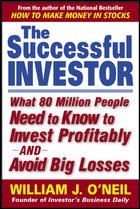I got several emails asking why I bought Republic Cement. I have 16% of my portfolio invested in the stock.
I started accumulating RCM in 4Q04 when it was trading at P0.50. It is not easy buying RCM since it is thinly traded. You can hardly get 100,000 shares without disrupting the price. It requires a lot of patience. However, with the potentials of the stock, I am willing to play the waiting game. I think RCM is a potential “5-bagger”
To begin, let us do a comparison between Holcim (HLCM – P5.20) and RCM based on 2005 audited results.
HLCM - PER – 27.0x, Price to Sales – 2.3x, EV/EBITDA – 14.0x. 2005 Revenue – P14.0bn; 05 NIAT – P1.3bn
RCM - PER – 6.8x, Price to Sales - .5x, EV/EBITDA – 8.0x. 2005 Revenue – P12.0bn; NIAT P1.0bn
RCM trades at a 75% discount to HLCM. Obviously, there is a huge disparity in valuation. I do not think that with only two cement companies operating in the country right now, there should be any valuation discrepancy. Both companies are well managed and owned by major multinationals. HLCM is majority owned by CEMEX of Mexico while La Farge of France owns RCM. Both companies practically have the Philippine market between them.
Assuming RCM approximates the valuation of HLCM, the stock should be trading at P3.33 per share.
It is a matter of time before the market realizes the value of RCM. Here are my arguments:
1.) There is a strong liquidity flow into the market. Value turnover for the past 2 weeks have reached P3.5bn per day versus the P1.3bn average in 2005. Obviously, liquidity will also flow into inactive but fundamentally sound stocks.
2.) We have seen strong appetite for low PER stocks. Counters like Petro Energy (PERC-P11.25), Roxas Holdings (ROX – P3.35) surged 3 folds in the past 3 weeks. I don’t think good stocks will continue trading at single PER multiples. More funds will surely chase up these “low PER” stocks.
3.) Overall PER expansion for the market will make RCM “relatively” cheaper. Currently the market trades at 15x PER based on 06 estimates. Most likely, we will see the market trade at 17-20x PER.
P.S. Last week, cement prices surged by P50.0 to P220.0/bag. I guess this will be another angle for the market to play up the stock.

